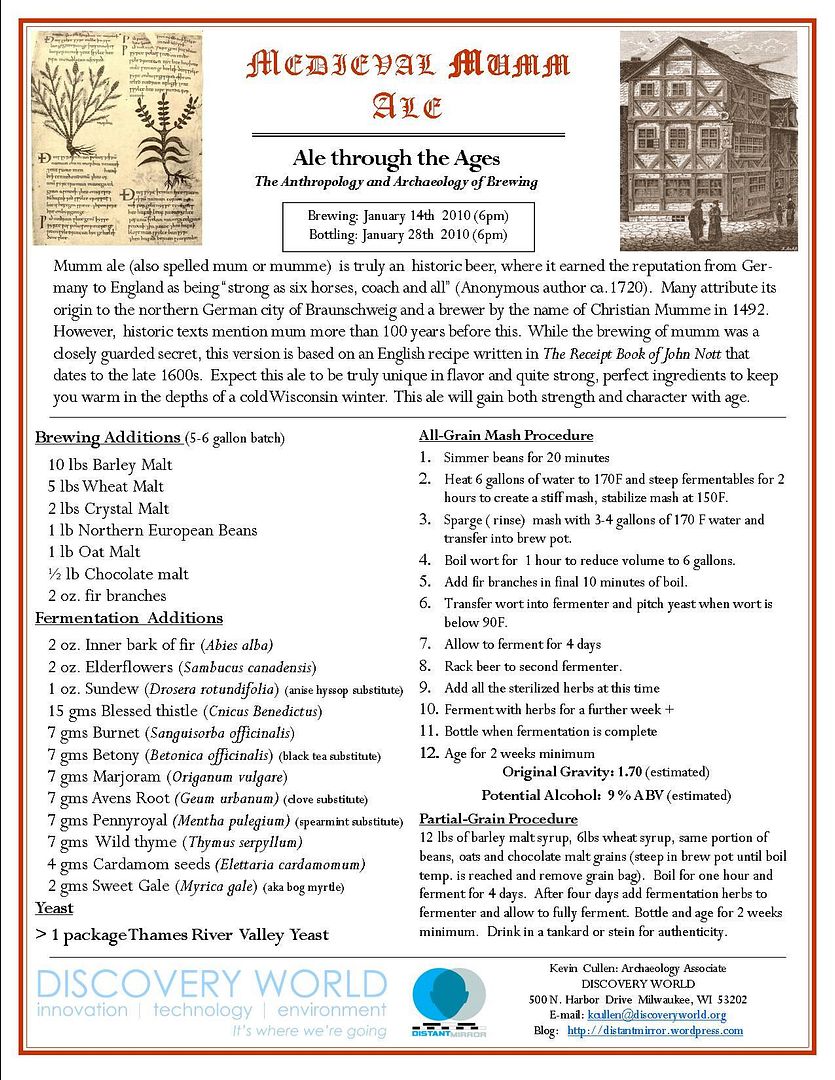Well, after writing more of book two of my home brewing adventures, & discussing dampfbier, kottbusser, etc in a historical context, I mentioned how in the world to search for rare or extinct ales. Short of going to library of congress, etc. So I saved what I'd written up to that point & started a couple searches. After typing in " rare or extinct beer styles" in the search box, I stumbled onto some writings about a nearly extinct German ale called "mumme", pronounced "moom-eh". It's seems to be the ancestor of Altbier. But the Germans being such a protective lot, I had to settle on an old English recipe, dating back to the late 1600's. It's a 6 gallon AG recipe I'm going to convert to pb/pm biab. This is definitely a complicated grut ale, having 13 different herbs/spices in it.
Here's the recipe listed as a pic on the site I found;

I'm thinking of trying this one next, but I have to run it through BS2 first. I don't like the PM version they give. I can mash more grains than that. I think this is another one of those ancient ales worthy of a try. But I'm left wondering about what Northern European beans are exactly? I also found this on the German Beer institute site; http://www.germanbeerinstitute.com/Mumme.html
And here's the yeast mentioned as a Wyeast activator; http://www.midwestsupplies.com/thames-valley-ale-yeast-activator-wyeast-1275.html
Here's the recipe listed as a pic on the site I found;

I'm thinking of trying this one next, but I have to run it through BS2 first. I don't like the PM version they give. I can mash more grains than that. I think this is another one of those ancient ales worthy of a try. But I'm left wondering about what Northern European beans are exactly? I also found this on the German Beer institute site; http://www.germanbeerinstitute.com/Mumme.html
And here's the yeast mentioned as a Wyeast activator; http://www.midwestsupplies.com/thames-valley-ale-yeast-activator-wyeast-1275.html





